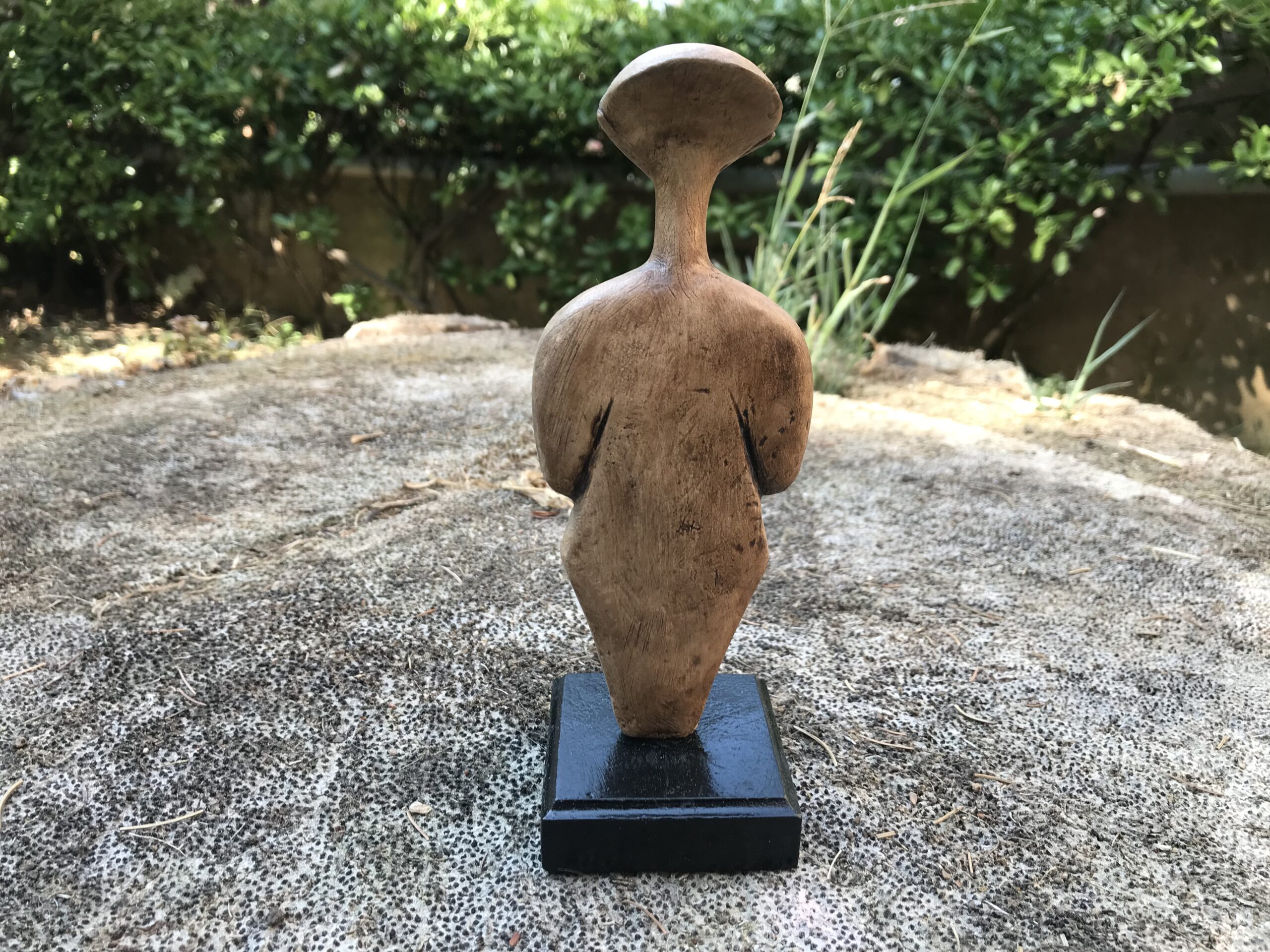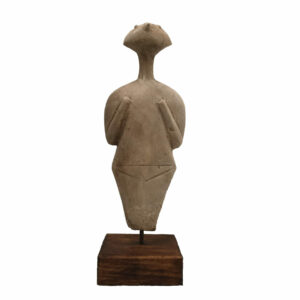Description
The ceramic copy of the ancient Kiliya Idol. Presented on a black ceramic pedestal. Inspired by the figurine at Sadberk Hanim Museum.
The figurine dimensions:
- Height: 16 cm
- Width: 6 cm
- Depth: 2.5 cm
- Pedestal: 6 cm x 6 cm x 2 cm
The “Kiliya Idols” are the female idols belonging to the prehistoric periods of Anatolia (Turkey). They are commonly dated from as early as 4500 to 4000 BCE, and have all been found in the region of Anatolia, now part of modern Turkey. They are called Kiliya Idols or more commonly known by their colloquial name ‘stargazers’, they received the name due to the upward angle of the figures’ heads, which give the appearance that they are gazing up at the stars. Complete stargazer figurines are extraordinarily rare, with reports of only 15 intact pieces worldwide.
Some of the Anatolian Kiliya-type Idols / Stargazer figurines exhibited around the world:
• Sadberk Hanim Museum – Istanbul, Turkey
Kiliya type idol. Marble, Early Bronze Age II, Mid 3rd millenium BC, Western Anatolia
• Cycladic Art Museum – Athens, Greece
Kilia type (“stargazer”) idol. From the site of Kilia, on the Callipoli peninsula in Eastern Thrace (European Turkey) c. 4360-3500 BC
• Christie’s New York, USA
“The Schuster Stargazer”, An Anatolian Marble Female Idol of Kiliya Type. Chalcolithic Periof, circa 3300-2500 B.C. Sold at Christie’s New York on 5 June 2005 for $1,808,000.
• Christie’s New York, USA
“The Guennol Stargazer”, An Anatolian marble female idols of Kiliya type.
• Clevaland Museum – Ohio, USA
“The Stargazer” c. 3000 BC, Western Anatolia
• Getty Museum – Los Angeles, USA
Female Figure of the Kilia Type 4500–3500 B.C, Anatolia









Reviews
There are no reviews yet.